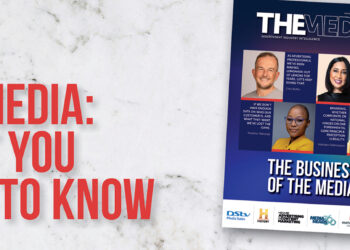While we are spoilt for media choices, the creative is more important than ever.
As strategy season peaked in 2013, we once again realised the daunting task that lies ahead. The media landscape continues to fragment with the multitude of available media choices. Also, the number of options within each medium continues to grow.
I have attended a number of new TV channel launches recently and, while they are an exciting prospect, they just muddy the waters even more.
The fact is, consumers are becoming increasingly difficult to reach because of the plethora of choices. What is even more alarming is the additional spend that is required to gain the reach figures we once took for granted.
Consumer research is suddenly no longer a nice-to-have but a vital cog in the process of defining the correct target market. We also have to find out what consumers’ media preferences are, how they are consuming each of the media choices and how we need to influence them to take our product from consideration set to actual purchase intent.
Striking the balance between delivering sufficient reach for each of your campaigns in order to make an impact and also targeting your message to the most receptive consumer is an on-going battle. Often there is a focus on using multiple channels, but this only delivers an incremental reach.
As we know from AdEx, TV is still the most used medium in South Africa and it is often used to deliver the reach required for most campaigns. However, interestingly enough, it is the power of the smaller inexpensive channels that help in the duplication and reinforcement of the campaign messaging to key target audiences.
These niche media are able to deliver strong brand impact at a relatively low cost, and they can only be identified through correct target market research and data analysis.
Although the media type used is an important factor in delivering the message to the consumer, what we cannot ignore is the power of creativity.
As media strategists, we have the ability to place advertising in the right place at the right time, but unless the messaging and the creative delivery is strong the consumer switches off and the money spent is wasted.
Good creative has the ability to:
- Make people stop and pay attention;
- Fuel the memory and endear you to a brand;
- Generate interest around a new brand or product and get people talking about it; and
- Enhance a person’s perception of a brand.
For brand managers, good creative always forms part of the brief, but it’s the advert’s ability to create an impression and allow the consumer to link it to a brand that is vitally important. This allows it to grow the brand’s equity and market share over the long term. Typically, strong creative has an emotional appeal to the target market and makes ads more memorable.
Marketers now have the ability to use the wealth of channels available to them to target a specific audience. Through them, they can find new ways to communicate with audiences, both creatively and from a planning perspective, to deliver significant rewards.
To deliver brand impact in a changing environment, the focus needs to be on the importance of delivering tailored messaging and creative to those consumers you value most in the correct media at the correct time. In order to get the desired impact, we need to use the media that delivers the immediate reach required over the short term, but make use of the smaller channels to create a relationship.
Jedd Cokayne is a media strategist at The MediaShop.
The Advertising Media Forum (AMF) contributes a monthly column to The Media magazine looking at issues affecting the media agency industry.














